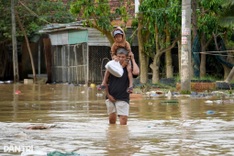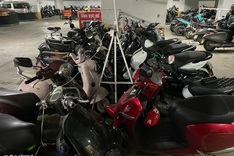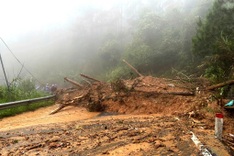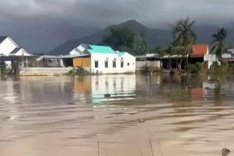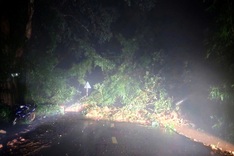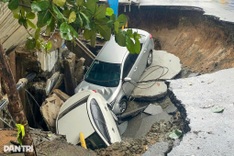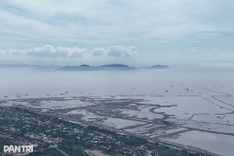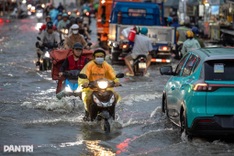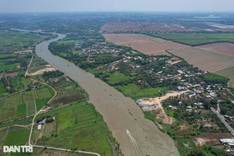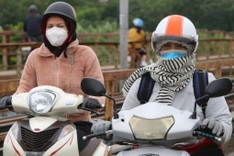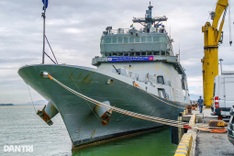Despite being listed as threatened or endangered species, and also being listed in the international Convention on International Trade in Endangered Species (CITES), trade in marine turtle products still exists in many countries, including Vietnam and it’s neighbours. Plastic imitations of marine turtle and tortoise shells have been around for many years, but some people still desire to have the “real thing”.
Plastic imitations of marine turtle and tortoise shells have been around for many years, but some people still desire to have the “real thing”.
Unfortunately for marine turtles, the commercial sale of marine turtle products is a critical factor contributing to their continued decline and possible future extinction.
Awareness programmes have been conducted to educate people about the need to protect marine turtles, but unfortunately there is still some trade in turtle meat and eggs, and shell products. Small, whole turtles can still be purchased in some locations in Vietnam.
Marine turtles are widespread round the world in tropical and sub-tropical oceans. They travel long distances across the oceans. A characteristic of their life cycle is that the adult female turtles lay their eggs on specific beaches.
The eggs, which the mother buries in a nest under the sand, hatch after a month into baby turtles. The small turtles then make their way out of the nest and down the beach to sea. In Vietnam, 30-40 years ago, marine turtles commonly came ashore on mainland beaches to lay their eggs.
Today mainland turtles are rarely found on mainland beaches except at Nui Chua which is a marine protected area. Nesting sites are found on some offshore islands, particularly the Con Cao Islands, where they are also protected.
There are other, scattered nesting sites, where the turtle nests are sometimes destroyed by harvesting the eggs for eating. Digging up turtle eggs is one of the contributing factors leading to the continued decline in turtle populations.
Once turtles have grown to full size (one species the leatherback Rua da, may grow up to 900kg, the size of a small car), they have few predators at sea. Marine turtles are one of the oldest groups of living animals, about 200 million years old.
Turtles were well adapted to their environment until human activities began to reduce populations over the past 30-50 years.
The main threats to marine turtles include widespread direct and indirect fishing based mortality, direct harvest for the production of turtle products (shells and meat), the collection of eggs, and habitat loss or alteration.
As yet, the aquaculture production of marine turtles has not been successful and none look like being available in the future. Consequently all turtle products come from a declining wild populations.
At sea, turtles maybe directly targeted by fishers for food and shells, or accidentally captured in fishing gears. Direct target fishing is now very rare, partly because catch rates are very low compared to 30-40 years ago.
Turtles have been caught for eating, use of the shells, and also as part of some traditional medicines. Some traditions also placed stuffed turtles in the foundations of house to bring good luck.
However there are also some religious beliefs and superstition that catching turtles bring bad luck to families. Unfortunately the incidental catch of turtles by longline fishermen and trawlers remain a significant threat to turtle survival.
The incidental catch of turtles by longline fishermen can be significantly reduced by using special “circle” hooks that can be easily removed from the turtle without harm. There are active awareness programmes being conducted with Vietnamese longline fishermen by the World Wildlife Foundation Marine Turtle Foundation to adopt the full use of “circle” hooks.
Why protect marine turtles? Turtles can be considered as an “indicator species” – they represent the health of the marine environment. Hence their continued decline represents a continued decline in the overall health of the marine ecosystem.
Turtles are also a “flag ship species”, much like whales, representing the need to protect the environment. The loss of such species would represent the inability of humans to ultimately provide for their own health and well being, let alone that of the species being lost.
In recognition of the need to protect and restore populations of marine turtles, marine turtles are listed in the Vietnamese legislation “Regarding declaration of the list of endangered aquatic species in Vietnam which need protection, reproduction and development”. Turtles are also protected under CITES.
Various Government agencies and NGOs are actively promoting awareness of the need to protect the declining turtle population. Vietnamese citizens who are aware of the plight of marine turtles can contribute by not being part of any of the contributing factors leading to their decline.
If you see any marine turtle products for sale of turtle meat in a restaurant, politely decline to participate in their destruction. Once aware an appeal to conscience may be needed. After all, no one wishes to tell his grandchild, lamenting on the loss of marine turtles, that they may have eaten the last one.
Five species of marine turtle are known from Vietnam:
Vich or Green turtle (Chelonia mydas). Most common species now, size 90 -180 kg. Found in Con Dao Islands, Nui Chua Islands in Gulf of Thailand and some other offshore islands. Listed as Endangered.
Rua da or Leatherback turtle (Dermochelys coriacea). The largest turtle species, 200 – 900 kg. Very rare, and listed as Critically Endangered.
Quan dong or Loggerhead turtle (Caretta caretta). Size 65-100 kg. Very rare and listed as Critically Endangered.
Doi moi dua or Oliver Ridley turtle (Lepidochelys olivacea). Smallest species, 33 – 43 kg
Used to nest 30 years ago on mainland beaches. Listed as Endangered.
Doi moi or Hawkesbill turtle (Eretmochelys imbricate). Size 65-100 kg. Used to be most common species in Vietnam. Still some illegal trade in the shells. Listed as Endangered.
Marine Turtles – the need to protect the species
Despite being listed as threatened or endangered species, trade in marine turtle products still exists in many countries, including Vietnam and it’s neighbours.
Source: Tuoi Tre





